We kindly inform you that, as long as the subject affiliation of our 300.000+ articles is in progress, you might get unsufficient or no results on your third level or second level search. In this case, please broaden your search criteria.
The essay deals with the relationship between ethics, science and the character of society associated with challenges such as: What is the contemporary role of science in society and how does it fulfil it? Is value oriented “engaged” science possible? What does the responsibility of science mean? What is the reason for and the state of integrative, interdisciplinary, cross-disciplinary and/or post-disciplinary approaches in the science? What is the role and meaning of evaluation in scientific production and/or its usefulness? What is the value, cost and effectiveness of science? Is scientometrics an adequate answer? What is the role of ethics and science in the context of sustainable development/living/society? In the final section of the essay several examples drawing on the international as well as the national level are introduced. The ambition of the author, a professional environmental geographer, is not to submit an extensive excursion into most fashionable aspects of the topic within the global philosophical context. The author describes his own personal experience and position and tries to discover what the emerging challenges and threats in this field may be, first of all in the current Slovak context.
More...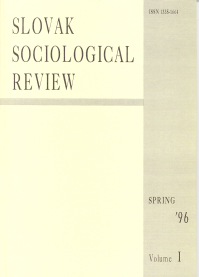
Reading Literacy of the 4th Grade Pupils: Relations of Achievement to Pupils´ Age within the Grade.The study focuses on students´ age differences within a grade and relationship between these age differences and students´ reading literacy achievement from international point of view. The data from two cycles of international reading literacy studies PIRLS 2001 and PIRLS 2006 from Slovakia, France, Italy, Iceland, Norway and Sweden were used. Through regression analyses the reading literacy achievement of normal-aged students is compared. Normal-aged students complied with the schol entry cut-off rules, they did neither repeat nor skip a grade, and they were born within 12 months period. The results showed positive relationship between the students´ age and reading literacy achievement in all analyzed countries and both study cycles. The strenght of this relationship is connected to the age of students at the time of testing and country´s educational policy regarding delay of schol enrollment, and retention or acceleration of students. The subsequent analysis focused on the Slovak data in more detail. The results showed that the age differences were more distinctive in the achievement of boys than girls; the average achievement of students divided into groups according to their age (younger students, normal-aged students, students older one year or less, students older more than one year) differs considerably. The group of students whose school entry was one year delayed achieved significantly lower than normal-aged students. We thus concluded that their school entry delay was reasonable.
More...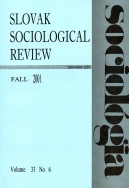
Local Culture in Slovakia. Perceptions of local culture in Slovakia still owe much to a division between official and unofficial, formal and informal, or traditional and alternative spheres, a division imposed upon local culture in the communist era. A related distinction between organised and spontaneous ‘streams’ of local culture is retained in the initial descriptive part of this article (following a brief overview of the situation of local culture under communism) since many ‘old’ institutional forms continue into the present (and are therefore reflected in statistical categories), although their practical content has evolved. Another, largely self-contained ‘stream’, organised by Matica slovenská, is also considered at the outset, although it is omitted from the subsequent discussion and examples. The article then explores the post-1989 public debate on local culture, which has been dominated by a ‘revolutionary’ discourse emphasising concepts such as de-étatisation, decentralisation, pluralisation and a return to authenticity in cultural expression and organisation. This has been opposed by a ‘residualist’ discourse, which continues to stress the irreplaceable role of state agencies in guaranteeing the preservation of a traditional Slovak local culture. These discourses are examined in the context of the history of political reform affecting the organisation and financing of local culture. Following this the article analyses two critical transformation processes: the transformation of state cultural education institutions and the transformation of local public administration (local government). State institutions are faced with the challenge of adapting to the changing institutional-social-cultural environment, and, notwithstanding the presence of residual paternalistic attitudes, have often done so with some success. Local authorities are involved in a search for new types of relationship with the voluntary sector (including participants in local culture), the private sector and state agencies. With the decentralisation of competencies to local (and now regional) authorities, and also partly as a consequence of the ‘pro-democratic alliance’ with civil society groups during the era of the last Mečiar government, local self-government is increasingly seen as the natural embodiment of a community's identity, with a moral as well as practical responsibility for the development of local cultural life. Several examples demonstrate how local culture benefits from the interaction of these various actors in flexible partnerships, exploiting the specific skills each one brings. The examples also show the resilience of local culture, even under difficult social and economic conditions, wherever there exists a core of committed activists. Local culture - as the multifaceted expression of the ‘personality’ of a place - has a vital role to play in mobilising a community’s human potential, enabling communities to respond constructively to social transfor
More...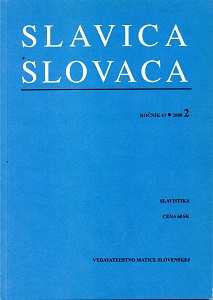
The Author in the paper presents a book called Severné hranice Slovenska by Matej Andráš – a well-known Slovak journalist, diplomat and historian, who has devoted a long time to research of forming Slovak-Polish borderlines in the 20th century (1909, 1918-1920, 1938, 1945, 1949). Andráš´s objective description of this unknown topic is based on research of materials from historical and diplomatic archives, and also on research of specialized expert literature and memoirs. M. Andráš also uses data from his own personal archive that was collected during his active diplomatic career in Poland and from the sources of long partnership with Association of Slovaks in Poland.
More...
The main purpose of this contribution is to publicize research results of the lingual-communicative behavior of the Slovak youth in Slovakia and Hungary, which were obtained in 2010 in both named countries. We analyze an indicator of the minority ethno-cultural development, as well as three selected components of it – individually and in reciprocal interrelations, as well.The referential framework of this article consists of two analytical levels: analysis of opinions relating to the development of the national culture (Slovak or Hungarian), mother language (Slovak or Hungarian) and national education (Slovak or Hungarian); and analysis of mutual contexts of research participant opinions (individual groups about ethno-cultural development of minorities with regard to the identification indicators of research participants (locality, family, education).
More...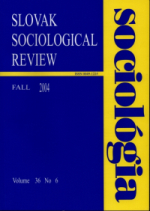
The impact of the Baťa’s enterprise on the economical, social and architectural environment of the Czechoslovak Republic was significant. However through the whole history it was perceived with hesitation. In 1930s the Baťa’s activities have faced the criticism from the representatives of leftist avant-garde, later from the representatives of the communistic regime. These negative attitudes caused that the rationalist conceptions of town planning, typification and unification of Baťa architecture appeared in professional press only occasionally. Only in the 1990s several studies and exhibitions have emerged that reflected and evaluated from a distance the architectural and social work of the Baťa concern in Czechoslovakia. Most of the attention is being paid to Zlín, the seat of the company and to the most important personalities of the Baťa Company like Tomáš Baťa and Jan Baťa and architects as Vladimír Karfík and František Lydie Gahura. However, Slovak satellites of the Baťa Company have been mentioned only rarely an evaluated as marginal. This paper carries the principle information on Baťa town planning, architecture and social engineering generally and on the example of the Baťovany settlement in particular. It focuses on the new knowledge connected with the history of the industrial town Baťovany – Partizánske, its town-planning, architecture, social environment and the relations between the Bata headquarters in Zlín and the local branch in Baťovany. At the same time it examines the role of Baťa’s social and architectural activities in the process of modernization of Slovakia.
More...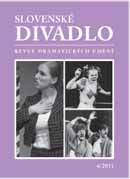
The Image of Border, Foreign and Foreigner The study Migration of Italian culture into the territory of Slovakia – The Image of Border, Foreign and Foreigner is the final output of the scientific grant program Vega, summarizing a partial research of recent years, concerning the revival and continuation of existing and supressed genetical and typological links between the two cultures after 1990. The output of the research on the development of drama, theater and literary theory as well as literary translations from Italian prove the paralel existence of several cultural communities during the forty years before 1990: the ideologically constituted Soviet community, the community of Danube cultures and the community of nations of former Austro- Hungarian Monarchy. Given that Italian culture is situated at the intersection of the latter two communities, it appears that genetic and typological relations were not dicontinued completely, although they were not linked to the Soviet cultural community. Noting the routes and diffusion of cultural information, the study has been inspired by Trieste – Istrian border community, while it applies the Armando Gnisci theory of decolonization to the situation in Slovakia after 1990. Through the image of foreign and foreigner in the dramatic work by Dario Foa and through the translated works of Antonio Tabucchi (Indian Nocturne) and Alessandro Baricco (City), the study reconstructs the complicated process of acceptance of otherness and wonderrejection tension, which is typical for the culture on the territory of Slovakia regarding acceptance of foteign and foreigner from Italian culture. The literary works brought to Slovakia in Slovak translations have been studied as typical examples of reception of both, foreign and the image of foreigner. Despite the acquired freedom and restoration of the genetic and typologic cultural relations, we can observe a relatively low ability to accept foreign elements and otherness. The works dealing with the image of foreign and foreigner have been available in the Slovak receptive territory, but the image of foreigner in them is striking and remains largely misunderstood. Although we longed for freedom during the era of communism, we did not know that freedom would mean „decolonization“ of ourselves from a isunderstanding of attributes that we perceive as foreign and from the complicated acceptance of a foreigner.
More...
Demographic indicators speak a clear language – sub substantial changes will regard productive population as well as older population and it will be particularly a matter of raising demands on formal services of longterm care and their financing. Sector of both formal and informal care will be under pressure of circumstances. This survey article describes variability of human relations between generations of relatives, their support exchange and options and limits of informal care for the elderly in Slovakia and in the world. Informal caregiving relationship is perceived as one of forms of solutions for a longterm care for older persons. In this contribution, we also deal with an educational side to intergenerational relationships as a starting line for educators of helping workers.
More...
This contribution is based on factors of mental human development, environmental influence towards the preschool child development. The subject of an investigation is to consider and assess the influence of social environment where the child is grow up, its personality formation and the quality of its develompent. This research survey is qualitative with the use of a method of observation, a questionnaire for parents of children, finding tests of preschool readiness and family drawings and drawings of spellbound families.
More...
The educational aspects of the social work are viewed and presented from two perspectives: historical and interdisciplinary. The article introduces a reader to the relationships of the social work and the so- cial pedagogy, and also explains their evolution. Doing so, it provides an ex- haustive literature review rooted in the Central European context while acknowl- edging the wider international development and the state of art of the knowledge in this field.
More...
V regióne strednej Európy existujú dnes v tesnej blízkosti tri univerzity eko-nomického zamerania (Ekonomická univerzita v Bratislave, Wirtschaftsuniversi-tät vo Viedni, v Budapesti Corvinus Egyetem) a dve vysoké školy ekonomického zamerania (Vysoká škola ekonomická v Prahe a Szkola Glowna Handlowa vo Varšave), ktoré však – napriek absencii pomenovania univerzita vo svojom ná-zve – majú tiež status univerzitnej vysokej školy...
More...
The principles of the state youth care and Programmes of Youth Support and Protection in Slovak Republic for 1992 significantly encouraged the development of out-of-school pursuits of young people in individual districts of Slovakia, helped to build a new network of associations, unions, youth initiatives as well as adult citizens with a deeper relation to youth work. The representatives of youth civic associations keep looking for a path toward young people. This takes the form of the search for the consensus in defending specific youth interests reflected in the deepening process of pluralization of the youth movement. It is also the search for the consensus in defending universal youth interests reflected in the process of deetatizing of the youth movement, i.e. through replacement of state paternalism by a new relation of the state to young people (best expressed by the term subsidiary).
More...
On March 26, 1993, three executions took place simultaneously in Japan, two in Osaka, one in Sapporo. This news stirred the attention of both media and people, and the problems of capital punishment has since then become one of country’s often discussed issues of the public opinion.
More...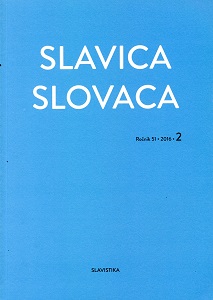
The Importance of Professor Joseph Ruzicka in the area of Slavic linguistics (Author: Ján Kačala) Profesor Imrich Sedlák retired (Author: Viliam Komora) Obituary for Professor Jiři Marvan *28.1.1936 - †13.4.2016 Author: Jaromír Krško The 100th Birthday of Academician Mikuláš Nevrlý Author: Michal Roman The Centenary of the Warsaw Slavic Studies (Author: Zuzana Obertová) Intercultural relations with Latin Eastern Church in Hungary in the late 18th century (author: Ľubomíra Wilšinská)
More...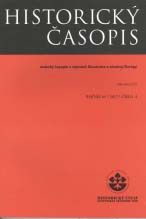
Vo vydavateľstve Patrióta (ak tomu dobre rozumiem = Vlastenec) so sídlom v Rimavskej Sobote vyšla v roku 2008 reedícia Gömör-Kishont vármegye (Župa Gemer-Malohont) v pôvodnom vizuáli, zlatom orezaní, ktorá bola vydaná podľa jednotnej osnovy v rámci celokrajinského projektu Magyarország vármegyei és városai (Župy a mestá Uhorska) pri príležitosti tisícročného jubilea „zaujatia vlasti“ Maďarmi, t. j. ich príchodu do Euró¬py a usadenia sa. Reedícia vyšla s finančnou podporou Ministerstva kultúry Slovenskej republiky, Banskobystrického samosprávneho kraja, Nemzeti Kulturális Alap (Národná kultúrna základina) a Szülőföld Alap (Základina rodnej zeme). Náklad reedície nie je uvedený, len cena 950 Sk = 31,53 €; kniha váži 2400 gramov. Už svojím výzorom, rozsa¬hom (717 strán), vecným záberom, úrovňou výkladových textov nebola nikdy „ľudovým čítaním“, ale účelovým oficiálnym produktom, reprezentáciou župy ako prosperujúceho regiónu vďaka tisícročnému Uhorsku.
More...
V máji 2016 sa konal zjazd Slovenskej historickej spoločnosti. V programe bola aj vedecká konferencia na tému História, historiografia a etika. V jej rámci vystúpil profesor Holec s príspevkom Historický prameň a etika (na stole, pod stolom a kdesi inde). Pretože som na jeho vystúpení nebola, nemohla som naň ani reagovať. Referáty z konferencie však uverejnil Historický časopis (ročník 64, 2016, č. 4) a tak som si referát mohla prečítať.
More...